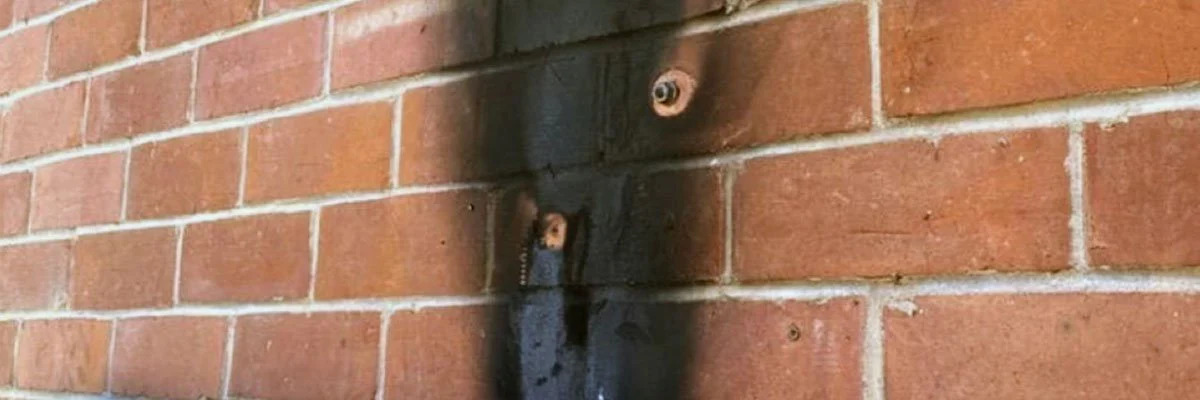These are the four basic steps for cleaning up smoke affected areas on brick or stonework:
- Remove any debris and scrape off any stuck on residue like burnt plastics, etc. Any burn plastic residues may have to be removed with special solvents at the end of the job. Do not try to remove all of this at this stage.
- Apply World's Best Detergent at approximate dilution of 1:10 water and apply by broom to small areas like 2 or 3 sq/m agitating with the broom as you apply. Do not allow the the detergent to dry out. Rinse off with a pressure washer (a hot one, if possible).
- Any hard burnt or resistant areas that become revealed can be treated with Bare Brick Stone and Masonry Graffiti Remover applied three times and three minute intervals then high pressure water rinsed off.
- Extremely hard burnt areas not responding to the first treatments as described will often respond perfectly by applying Feltpen Fadeout as thickly as possible making sure it is left for as long as possible. We leave it overnight if it is safe to do so.
Things to be aware of...
Any brickwork that has suffered such intense heat that it has cracked or the mortar joints have turned red/brown will never respond to any treatment within that area. The brickwork may have to be replaced.
Burnt plastics often respond to Methylene Chloride solvent type paint removers like Polystrippa. Please choose to use products like these at your own risk.
Interior surfaces such as plastered walls, paintwork can be treated as instruction #2 but by using a much weaker detergent mixture (1:20 water). Any smoke affected paintwork nearly always requires repainting.
An areas failing to respond to any of the above may respond better to acidic detergents as the burnt by product residues may be different compounds than expected.
These instructions are only to be used as a guide only and any job must be thoroughly investigated as to the sustainability of using such techniques BEFORE commencing any work.
3 Golden Rules
1) If graffiti is not coming off easily, you're doing it wrong. You may require a change of tact or use of another product.
2) If you can't remove a little bit of graffiti, then you're not going to remove a lot. TEST FIRST before applying product to an entire job. This way you can determine if you’re on the right track before embarking on full scale removals.
3) If you're working hard, you're doing it wrong. Forget the scrubbing, blasting and any other abrasive measures. Put simply, either your products are working or they’re not. Any problems can be taken care of with the right technique.

